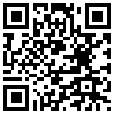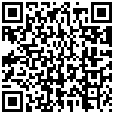Podrobnosti
Stiahnuť Docx
Čítajte viac
Many of us experience the frustration of cold hands and feet, no matter how much we bundle up. But what if there’s a better way to keep your extremities toasty without piling on more clothing? As it turns out, the key to staying warm might be simpler than you think. Your breathing patterns can directly impact your blood circulation, which plays a crucial role in keeping you warm. There are two ways to breathe – through your nose or mouth. Both connect to your throat that then carries oxygen to your lungs. According to an article in the Journal of Nursing in General Practice, approximately 30 to 50% of adults are mouth breathers. Breathing through your mouth might feel easier at times, but it can actually disrupt your body’s oxygen delivery system. Here’s how: Mouth breathing often leads to quick, shallow breaths that cause your blood vessels to tighten, reducing oxygen flow throughout your body. It also lowers carbon dioxide levels – a gas that prompts your red blood cells to release oxygen where it’s needed. Without enough CO2, your body struggles to get oxygen to your blood vessels, which can slow down blood flow and can even leave your hands and feet feeling cold. Nasal breathing, on the other hand, has many benefits and helps your body make the most of the air you breathe. Your nose is specially designed for safe and efficient breathing. It helps filter out dust, pollen, and allergens with nasal hair, aiding in keeping these substances from reaching your lungs.So, how can you make the most of nasal breathing in your daily routine? Incorporating specific breathing exercises is a great place to start. These practices not only improve your ability to breathe through your nose but also come with health benefits. Let’s begin with diaphragmatic breathing. This form of breathing – also called belly breathing – could actually strengthen your lung function and respiratory muscles and even help calm your mind. While diaphragmatic breathing focuses on strengthening your lungs and calming your mind, there's another technique that takes things a step further by balancing your energy and enhancing your overall breathing efficiency: alternate nostril breathing. Also known as Nadi Shodhana or channel-cleaning breathing, this yogic practice is known for its ability to alleviate stress, sharpen concentration, and improve respiratory function. This technique has proven beneficial for athletes, like swimmers, who rely on respiratory endurance to perform at their best.














